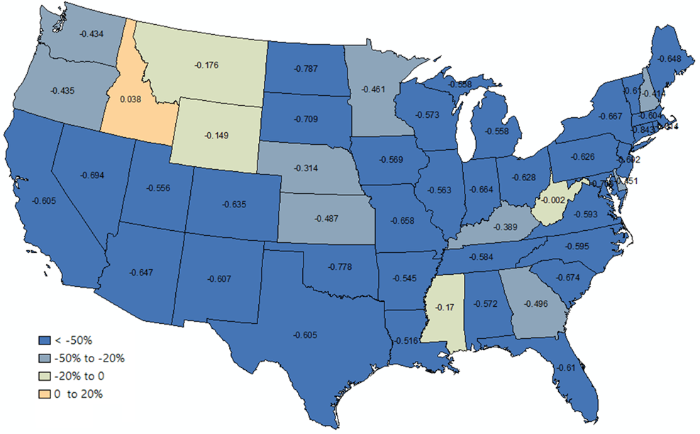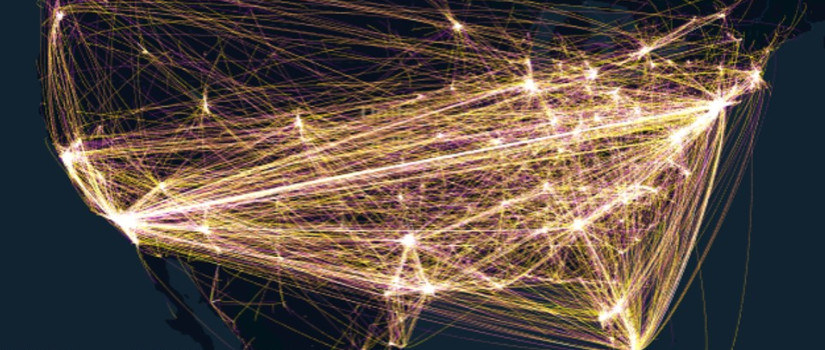NSF awards grant for ongoing research
The places people tweet could help predict a future pandemic thanks to the work of three University of South Carolina professors.
Zhenlong Li, a geography professor in the College of Arts and Sciences, and two Arnold School of Public Health professors, Dwyane Porter and Xiaoming Li, are studying the spread of the COVID-19 outbreak along with Twitter data that shows human movement patterns. They hope to develop a model that improves understanding about the current outbreak and could help fight future pandemics. In May, the National Science Foundation boosted their work with a $108,717 grant.
“We want to build the method and the tools, using this pandemic as a case study, so that in the future, we can quickly use this system for another pandemic,” Zhenong Li says. “We want to look at how this information can be used to predict future pandemics. or determine where they're likely to have higher risk of infection.”
Since the beginning of the pandemic, I have been thinking about what we can do here in my lab to help.
― Zhenong Li, Geography Professor
The project uses location data that is embedded in many Twitter posts. By looking at the change in location from one tweet to the next, researchers can see how people are moving with near-real-time accuracy. That’s helpful information to have, especially when trying to find out where a virus may be spreading.
Zhenlong Li , who founded UofSC’s Geoinformation and Big Data Research Laboratory, has used Twitter data to map flooding, hurricanes, wildfires and the travel patterns of people observing the 2017 total solar eclipse. After the university’s Excellence Initiative launched the Big Data Health Sciences Center in 2019, he joined the center’s Geospatial Core research group, leading to the current project.
When the coronavirus outbreak began, it was a natural fit for the center’s focus on using data analytics to study public health.
We want to look at how this information can be used to predict future pandemics.
― Zhenlong Li
“Since the beginning of the pandemic, I have been thinking about what we can do here in my lab to help using the technology that we have built over the past five years,” Li says. “The virus spreads pretty quickly from human to human. People are moving around. From our previous experience, we know that we can track the public's movement pretty quickly and accurately [with Twitter data].”
First, he focused on using Twitter to study how the pandemic was affecting travel patterns. By crunching data on millions of Tweets, he showed that the distance people traveled each week had dropped dramatically in March ― by more than 50 percent in more than 35 states. This could show a level of compliance with shelter-in-place rules and travel restrictions.

A map shows the percentage change in travel distances in states across March 2020. Darker colors indicate larger decreases. Only Idaho saw a slight increase. A larger version is available here.
His research also showed potential for predicting infection. He found that the number of COVID-19 diagnoses in American states was connected to the number of Twitter users in the state who had recently been in Italy, a country slammed by the outbreak.
With the help of the NSF grant, the researchers are going more granular and local with the data, drilling down to the county level. As the model is developed, health officials could use it to stay ahead of a virus during future outbreaks. For example, if an epidemic begins in New York, officials could use Twitter data to see which areas New Yorkers were traveling to so they would know where to look for the next stage of the outbreak.
Xiaoming Li, the SmartState Endowed Chair for Clinical Translational Research, is happy to see the project moving forward. “I am very excited to work with two members of the UofSC Big Data Health Science Center’s Geospatial Core on this exciting project,” he says. “This pilot project not only is timely in our efforts to fight the COVID-19 pandemic, but it also will demonstrate the power of social media and geospatial big data to inform our response to future public health crises.”
